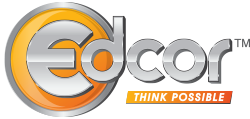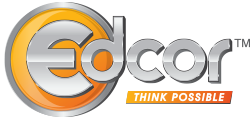The marketplace has shifted and long gone are the days when employees used to be wary of job security. The times that we’re in are best described by buzz words like Big Quit or Great Resignation. It’s real, and it’s here. The data from the U.S. Bureau of Labor Statistics shows that 4.4 million Americans resigned from their jobs in September 2021, this number was 11.5 million for April to June. Further, a Gallup analysis shows that 48% of the American workforce is looking out for newer opportunities and would switch a job for upskilling benefits. Relying on the trends, these numbers will continue to grow linearly before we see normalization.
Unsurprisingly, the data does make one wonder about the root causes and effective strategies to attract and retain employees as businesses walk on a double-edged sword trying to backfill the vacant positions and hire for new business growth. To this end, a Harvard study indicates that resignations are the highest among mid-career employees, who seem to be burnt out by higher workloads, lack of balance between work and personal life, and job stagnation trying to find greater meaning while steering their careers. These employees are looking for better benefits, flexibility, and career development opportunities. The study further shows that maximum exodus has been observed in the HealthCare and Tech industries closely followed by Retail and Logistics. Solutions will be found with a data-driven approach, and by tailoring the retention strategies.
Why is Upskilling Critical?
Experts indicate that the best way to stabilize your business is to stop the trickle and concentrate on retention first. Do not overlook the employees who stay, and optimally engage them and invest in their growth. The cost of disengaged employees comes up to 18% of annual salary. Upskilling is the only way ahead. The American Upskilling study by Amazon and Gallup shows that two-thirds of workers opine that employer-provided upskilling or education benefits are “very” or “extremely” important in joining a new company or staying in the current job.
According to LinkedIn’s Workplace Learning Report, the top three areas of focus for L&D programs globally are:
- Upskilling and reskilling: 59 percent
- Leadership and Management: 53 percent
- Virtual Onboarding: 33 percent
Companies investing in educational benefits for their workforce are already aware that it’s easier to upskill than to hire for new requirements, especially in booming sectors like retail, logistics, healthcare, and technology. Naturally, some of the largest conglomerates globally have invested in future-proofing their workforce – JP Morgan added $350M to their existing $250M five-year upskilling plan; Amazon is investing $700M to upskill their workforce; the biggest of all PwC plans to spend $3B to upskill employees. Unsurprisingly, dollars spent in upskilling have a higher ROI in the current market with worker shortages since these benefits also lead to employee engagement and retention.
Tuition Reimbursement to the Rescue
According to the International Foundation of Employee Benefit Plans Survey, 92 percent of U.S. organizations offer some sort of educational benefit for upskilling. Tuition Reimbursement or Assistance is the biggest one, and it’s obvious why. There is a high ROI on these benefits as they significantly reduce training and hiring costs due to internal mobility of the talent pool, along with building a leadership pipeline. Also, they lead to highly motivated and engaged employees who spend time and efforts in career growth within the organization furthering the workforce productivity metrics. Moreover, the cap of $5250 is tax-free for both the employee and the employer generating yet another win-win equation.

Education benefits also support your DE&I strategy. You probably know that financial concern is the number one reason why working adults don’t go back to school. But do you also know that third-party specialized HR benefits providers like Edcor can help secure zero out-of-pocket expense programs in collaboration with their partner schools – what is also popularly known as debt-free degrees. These are designed such that the school scholarships or grants cover tuition over and above the employer contribution of $5250+. Most of them have a deferral agreement in place or a direct bill option resulting in no out-of-pocket costs for the employees. This has a direct effect on women and the diversity group since it removes a major barrier to going back to school. Employees feel more valued knowing their employer supports their professional development – enhancing the inclusiveness quotient of the brand.
Here’s what you can do to enhance retention through your Education benefits:
1.Review your education benefits policy to evaluate what you offer and when, and link it with your retention strategy. For Example,
- are these benefits available for Part-Time or Full-Time employees or both, and
- are they available on Hire or after a certain period of employment
2. You may want to increase the annual benefit limit/cap to say $10,000 for hard to recruit/retain employees with high-demand majors and degrees for particular job titles. For example, offer a higher cap for an RN or Medical Services Manager in health care or a Senior Software Architect since those are valuable positions involving high recruitment and training costs.
3. Evaluate what percentage of your diverse workforce is utilizing these benefits. Higher degrees will result in better career and financial opportunities in the long term for them. Plan an outreach if there’s low utilization to highlight the DE&I culture you intend to build.
4. Gaze if your Educational benefits tie in with your organization’s L&D goals,
- Define Upskilling and what it entails in the next five years
- Outline sustainable career paths and high-demand skills
- Include short-term upskilling courses like Certificates and Certifications under the Tuition Policy
To conclude, globally 85 million jobs across 15 industries in 26 economies will be disrupted because of automation by the year 2025. The pandemic, its aftermath, digitalization, and technological advances will have far-reaching effects on the trends of the global economy. One is thing is certain though – the most competitive organizations will be those who follow an upskilling and reskilling regimen to future-proof their workforce.

Edcor is a woman-owned business and is the benchmark in education benefits administration. For 40 years, our customized service and solutions have allowed Fortune 500 Clients to use education benefits programs for employee recruiting, retention, and development. Please feel free to reach out to us!
Spardha Khera, Edcor



